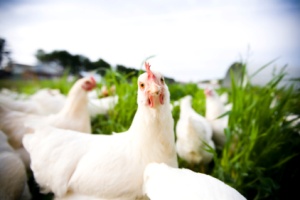 The USDA says it's getting out in front of potential worker safety implications of a plan aimed at speeding up poultry processing but that shouldn't be it's only concern, according to a watchdog group.
The USDA says it's getting out in front of potential worker safety implications of a plan aimed at speeding up poultry processing but that shouldn't be it's only concern, according to a watchdog group.
Food & Water Watch (FWW), an organization aimed at ensuring food and water safety and accessibility, says the HACCP Based Inspection Models Project (HIMP) would threaten food safety, citing data showing a high error rate among HIMP inspectors.
HIMP would shift poultry plant oversight from the U.S. Department of Agriculture to poultry companies themselves. Proponents say the move would save the USDA's Food Safety and Inspection Service (FSIS) $85-95 billion dollars over the next three years.
It would also produce a $250 million revenue increase for the poultry industry.
In a hearing before a House agriculture appropriations committee, Under Secretary for Food Safety Dr. Elisabeth Hagen called HIMP a "modernization" that would update an outdated poultry inspection system and decrease foodborne illness. More than 5,200 cases of illness are caused by contaminated poultry each year in the U.S.
Her contentation that plants operating with the HIMP model perform better than others in terms of contamination rate is being disputed by FWW, which has reviewed thousands of documents related to the HIMP pilot program. FWW says that company inspectors at chicken slaughter facilities participating in the pilot program have a 64 percent error rate, frequently missing defects like "feathers, lungs, oil glands, trachea and bile still on the carcass."
The error rate at turkey slaughter facilities is even higher -- 87 percent.
"Based on the data coming out of the plants where this privatized inspection scheme is already in place, it is unacceptable for USDA to try to expand this program to more plants," said Wenonah Hauter, executive director of FWW.
HIMP, which is a voluntary program, has poultry inspected for fecal matter further down in the assembly line than is the current practice. Responsibility for examining poultry carcases for visible defects lies with the USDA's Food Safety and Inspection Service (FSIS) at present. If the proposed rule is adopted, the agency would hand this role over to poultry plants.
Hagen also noted that FSIS is partnering with the National Institute for Occupational Safety and Health and is in discussions with OSHA about unintended consequences that HIMP might have on worker safety due to the acceleration of carcass processing.
Poultry companies would police themselves under new plan
Ag Department would no longer inspect plants



